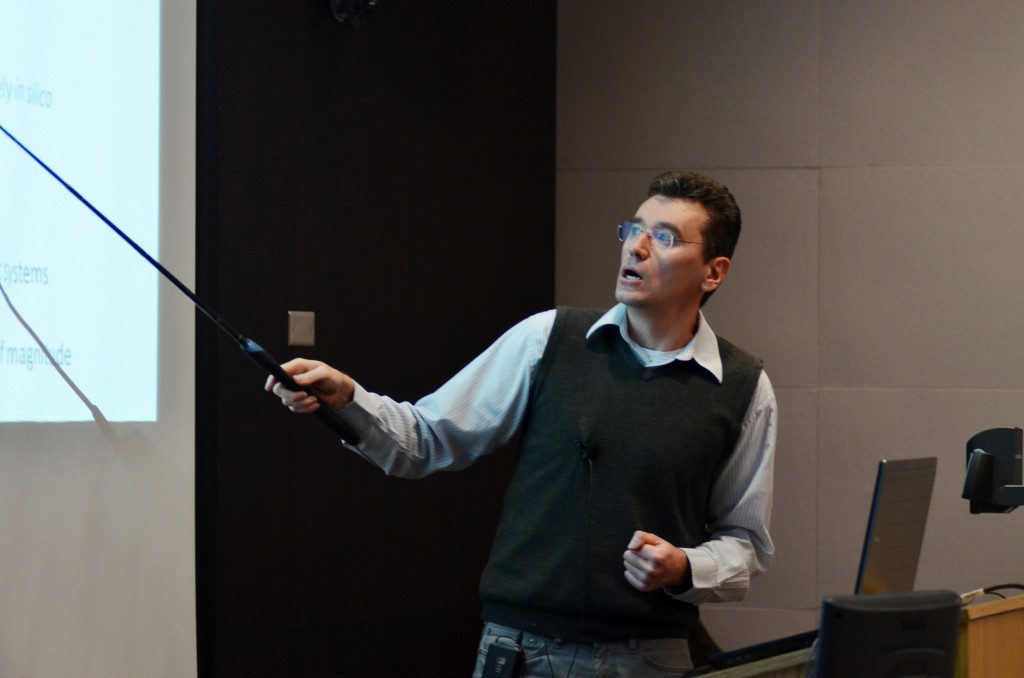
Evolution isn’t necessarily limited to biology. Researchers are discovering new materials to build optimal superconductors, or extremely cold materials that conduct electricity with zero resistance.
Aleksey Kolmogorov, assistant professor of physics at Binghamton University, spoke Monday during an evolutionary studies seminar about his work on finding new superconductors.
“Superconductors are a big part of my research, and they can alleviate a lot of problems in society,” Kolmogorov said.
By applying a process analogous to natural selection, researchers like Kolmogorov discovered better materials for making superconductors.
Superconductors are used in scientific projects, such as the Large Hadron Collider in Switzerland, as well as consumer services like bullet trains in Japan and MRI machines. Their biggest advantage is their resistance to electricity.
To make a superconductor “from scratch,” one must start with a material with a crystal lattice structure. A crystal lattice structure is the way the atoms are organized in a material. For example, diamonds are the hardest material known to man because of their structure. Graphite, which is made with the same elements, is much softer.
“There’s a fine line between what is a superconductor and what’s not a superconductor,” Kolmogorov said.
Figuring out what structure to start with is the first generation in the process. To get to the second generation and then the final product of a superconductor, researchers came up with a method through computers to allow them to identify which combination of elements and in what amounts would work best.
They used computers and programs to figure out which structures would work as superconductors. By programming in techniques found in evolution like natural selection, researchers were able to come up with materials that worked.
According to Kolmogorov, his team discovered that FeB4 was the first superconductor designed fully “in silico” or in computers.
“I thought it was interesting take, like it was cool to see this perspective of evolutionary studies,” said Josh Cohen, a junior majoring in economics. “It’s nice seeing all the different fields that evolution works with.”


